
Indoor jungles are one of our favorite green trends of the year and besides adding a fresh feel to a space, they also double as a charming piece of live decor.
And as one of the best indoor trees to bring home, it should come as no surprise that olive trees are amongst our very favorites. These tall trees are unparalleled in their grace, especially when paired with a large rustic planter.
However, an unkempt tree can easily void the room of style, so it's very important to keep your plants in healthy shape. To help us make the most of our olive trees, our plant experts have given us an in-depth guide on tips to employ for thriving green features. After all, a flourishing tree reflects a flourishing ambiance.
1. Regular Watering
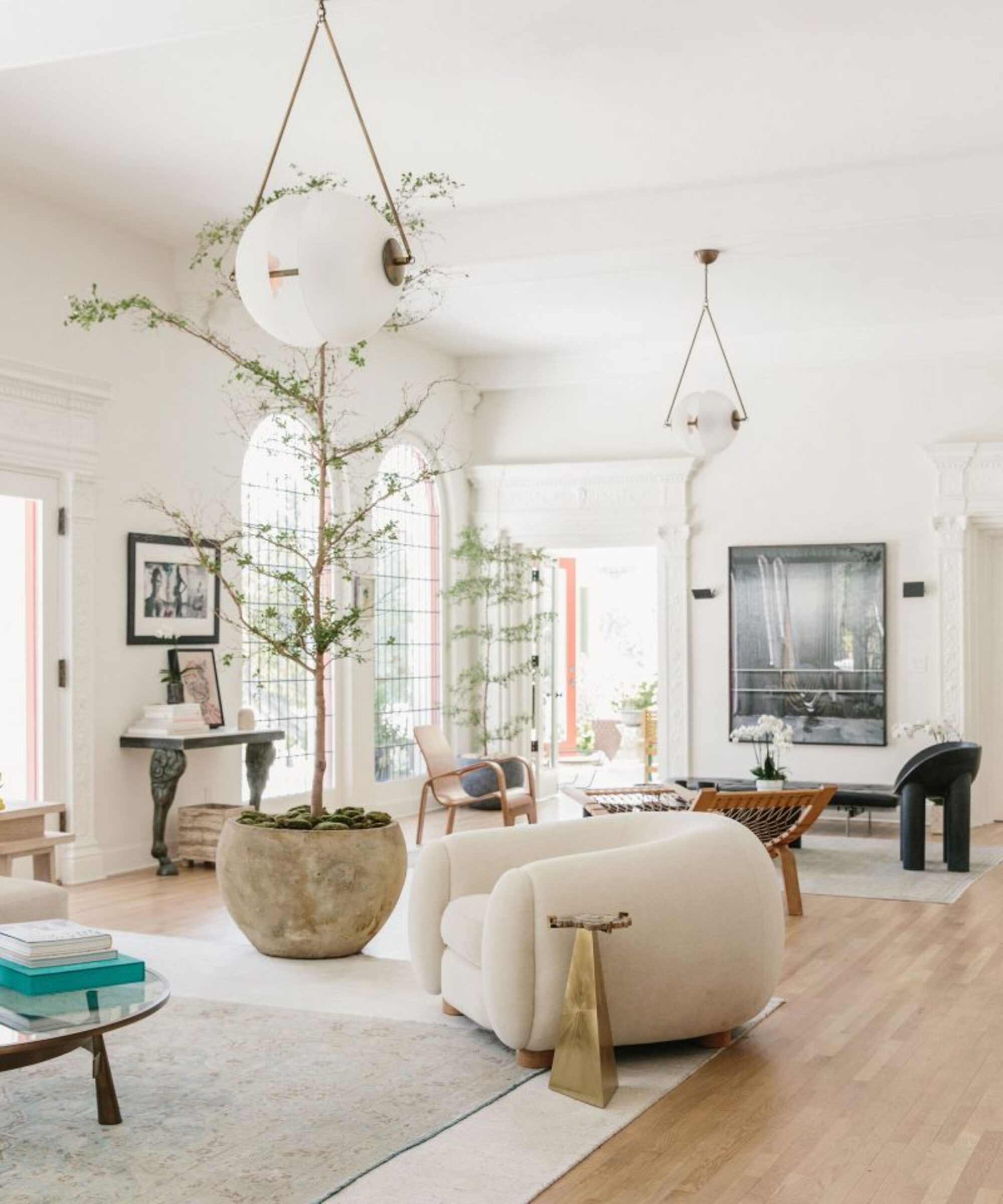
According to gardening expert Tony O'Neill, regular watering is one of the most important tips to keep olive trees looking and feeling good. 'It's best to allow the top inch of soil to dry out between waterings,' says Tony. 'Since olive trees are drought-tolerant and prefer to be on the dry side rather than too wet.'
He also warns against overwatering as too much hydration can lead to root rot in your olive trees. When it comes to indoor plants that make a room look more expensive, you can't go wrong with olive plants. And following a regular watering schedule will allow your space to reap the benefits of the olive tree for a long time to come.
2. Consider Soil Compatibility
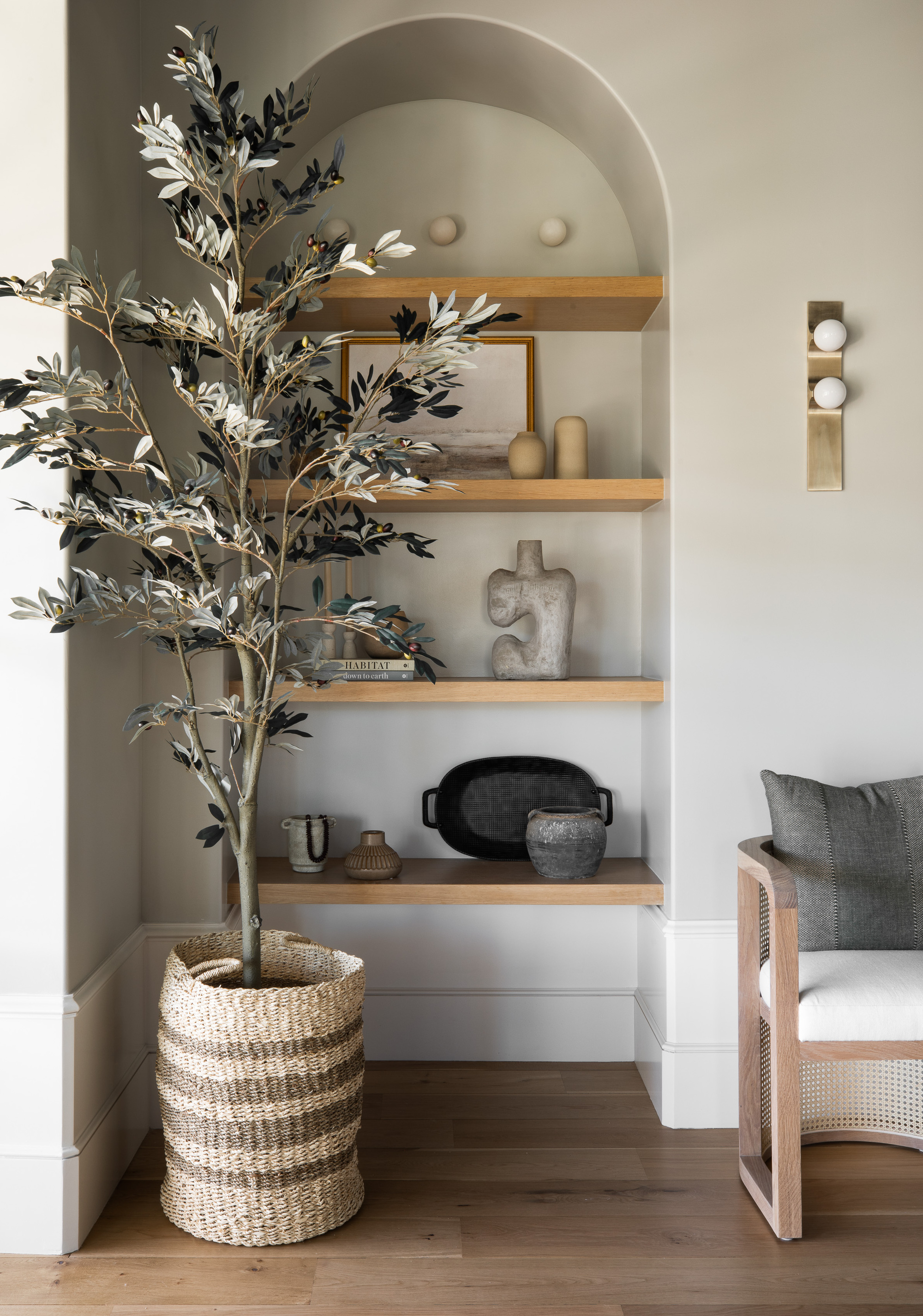
Carrie Spoonemore, co-creator of From Seed to Spoon, tells us that using a well-draining potting mix can do wonders for indoor olive trees. And if you can't seem to find a soil mix that specifically caters to olive trees, Carrie recommends opting for a planting mix that's made for succulents or citrus trees. 'These mixes work just as well since they usually have excellent drainage properties,' she says.
Tony echoes the need for well-draining soil and explains that this type of soil blend ensures that excess moisture can escape and the roots do not sit in water.
3. Regulate Temperature & Humidity
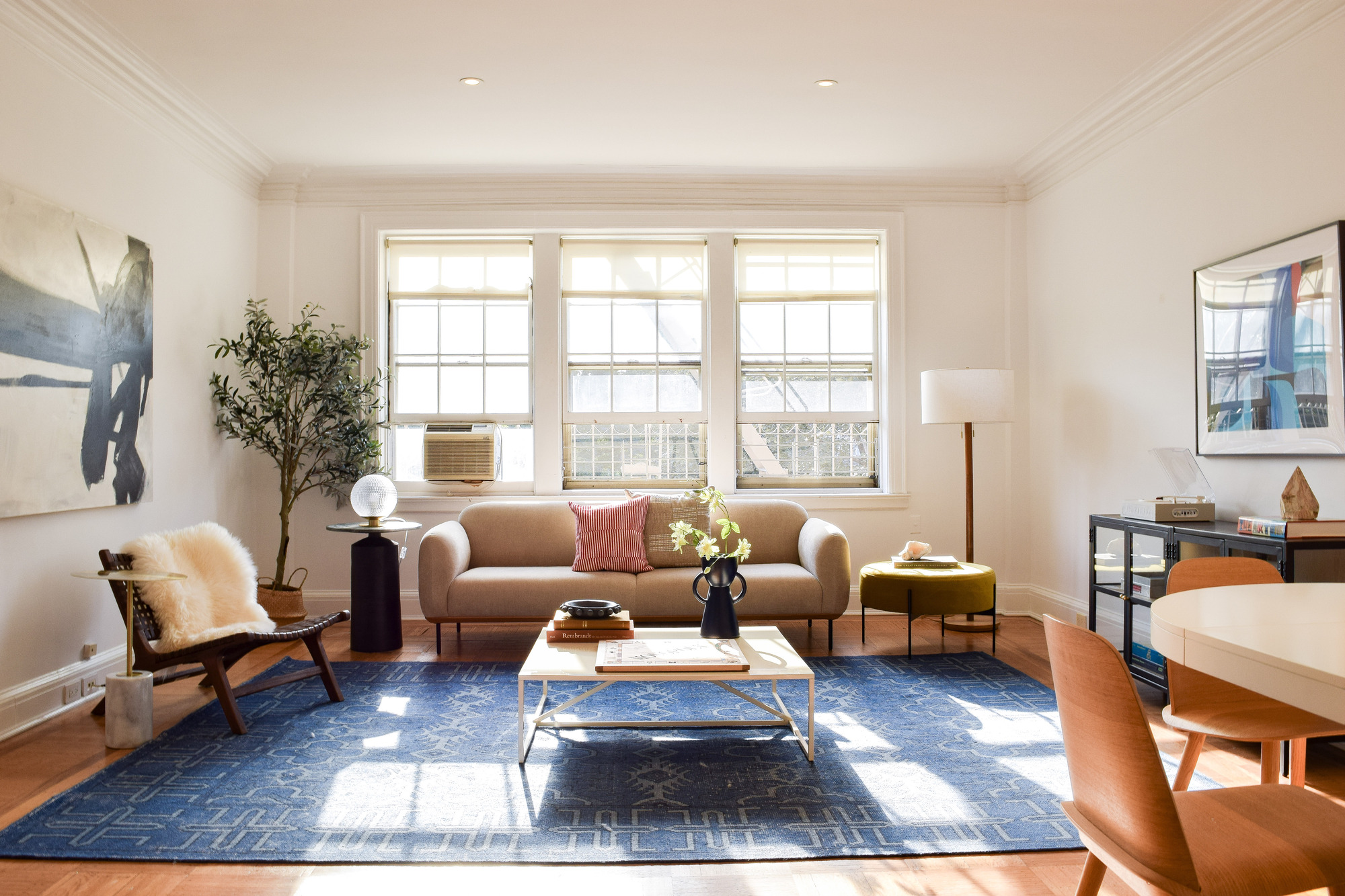
According to Carrie, olive trees prefer temperatures between 65-75°F (18-24°C) during the day and slightly cooler temperatures at night. 'They can tolerate temperatures as low as 40°F (4°C),' notes Carrie. 'But should be protected from drafts and sudden temperature changes.'
She also informs us that olive trees can tolerate low humidity, but occasional misting can help keep the leaves healthy, especially in dry indoor environments. 'Place a humidity tray with pebbles and water under the pot to increase humidity around the tree,' she says. 'Especially during winter when indoor air tends to be drier.' Definitely something to keep in mind when decorating your living room with indoor trees.
4. Favor Sunny Spots
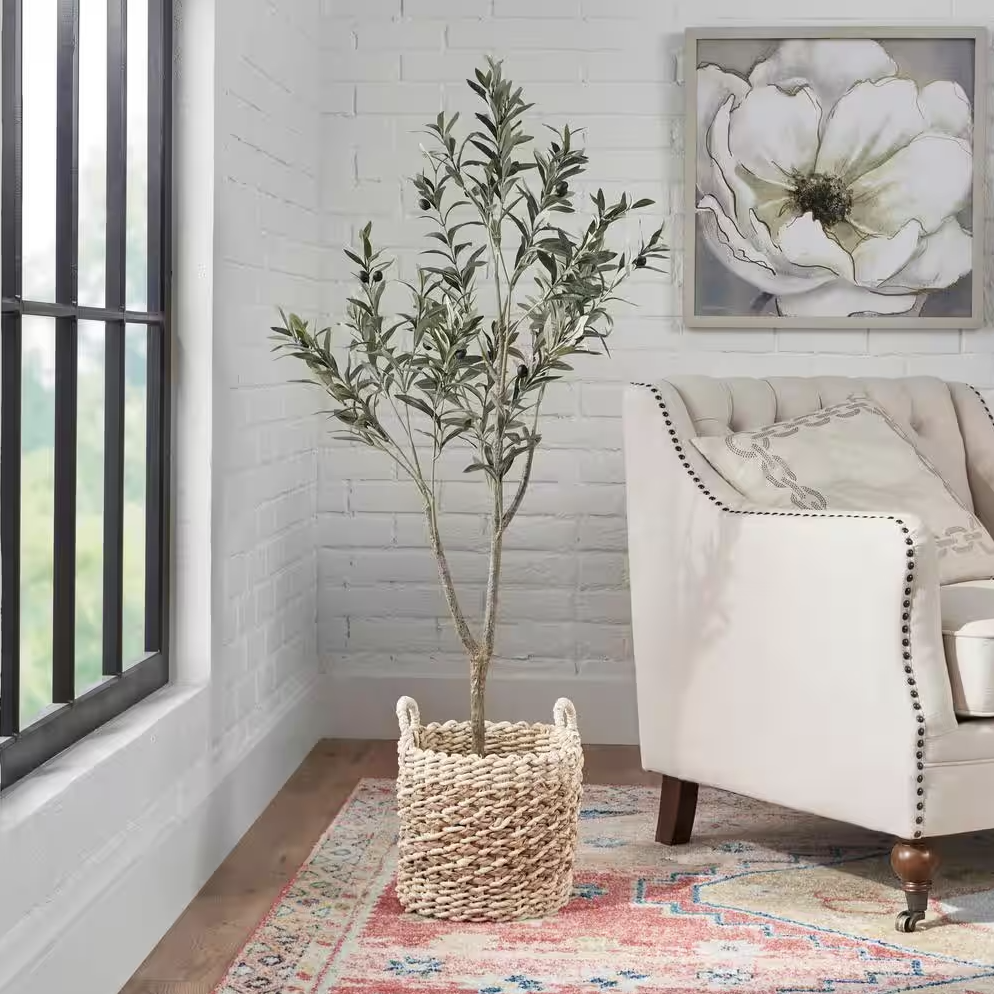
In conversation with Tony, he tells us that olive trees need plenty of sunlight to thrive. 'Place your indoor olive tree in a south-facing window,' he notes. 'This way it can receive at least 6 hours of direct sunlight daily.'
Shane Dibbs, owner of Seed Barn, also finds light to be an important variable to consider when growing indoor olive trees and points out that if the tree can’t get much sunlight throughout the day, it isn’t likely to thrive and grow.
So if natural light is limited, Tony recommends considering using a grow light to supplement the plant. This is an especially clever hack if you're interested in employing some bedroom plant ideas but lack the sizable windows necessary for natural light.
5. Treat with Fertilizer
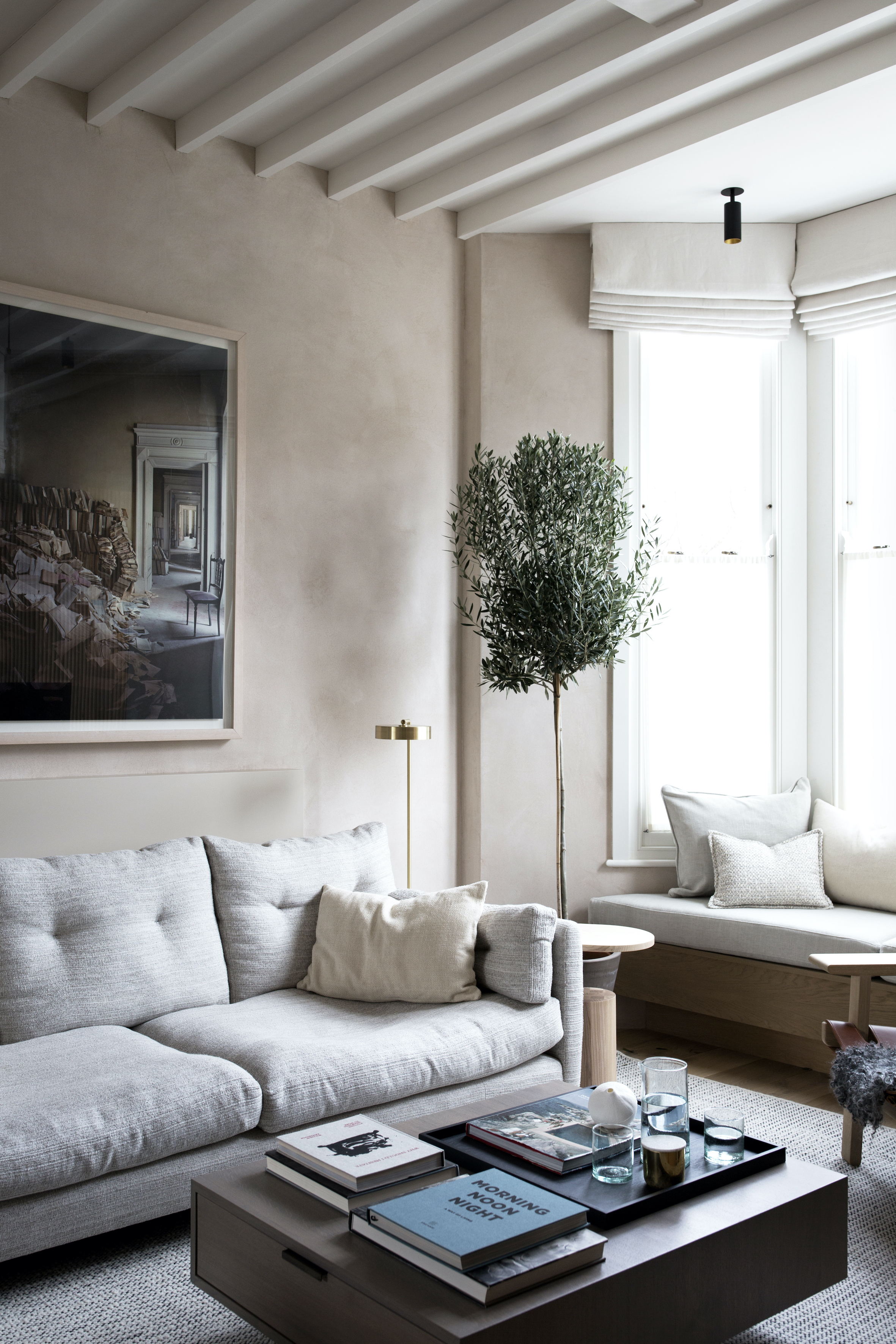
Like most outdoor crops, indoor plants also need a little bit of fertilizer to help them prosper. Tony tells us that olive trees are fairly low-maintenance for most of the year but do require feeding around the warmer months.
'Feed your olive tree with a balanced, water-soluble fertilizer every 4-6 weeks during the growing season (spring and summer),' he says. 'You can then reduce feeding in the fall and winter when the plant’s growth slows down.'
6. Schedule Plant Pruning
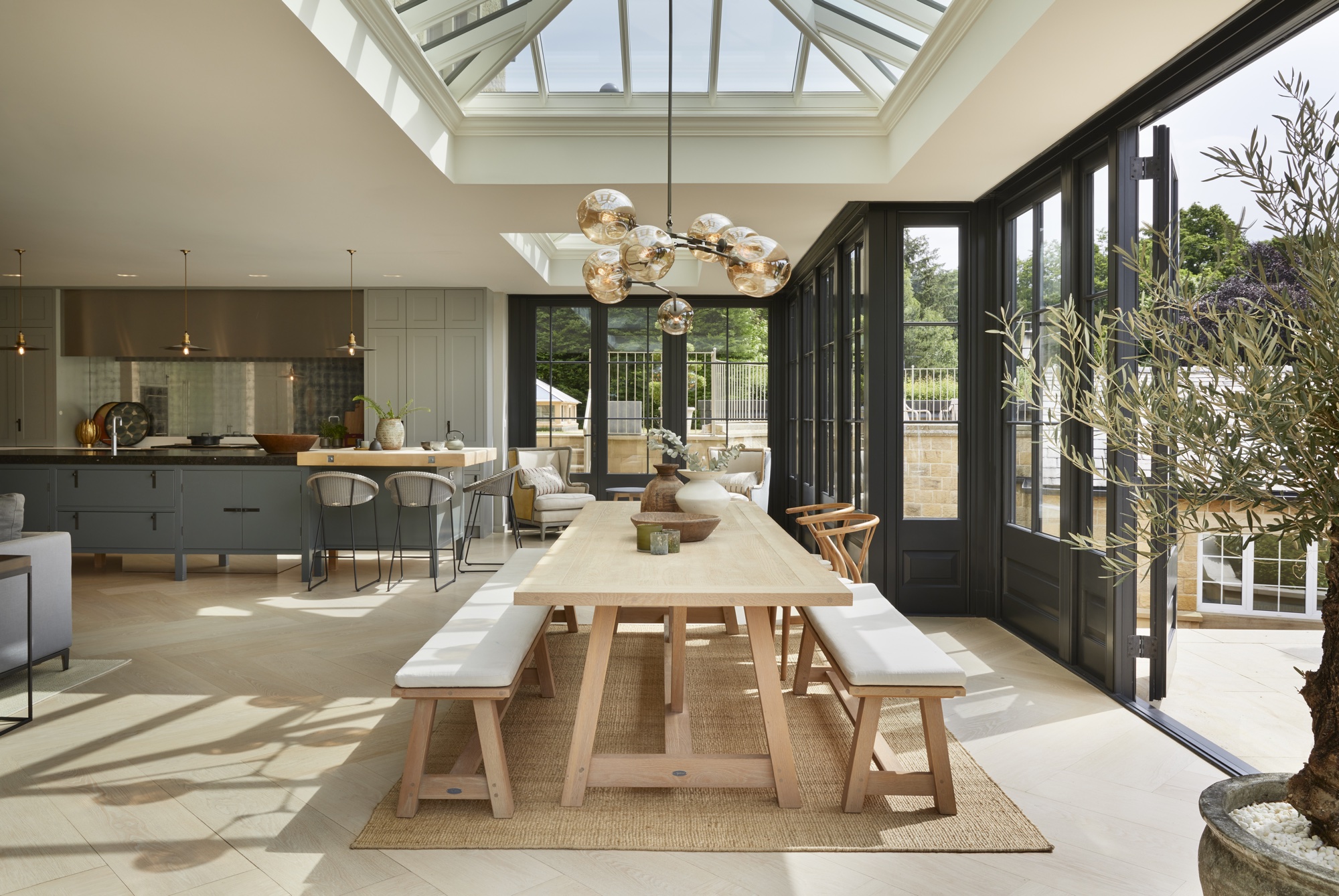
Especially with the black olive potted tree trend taking over interior spaces, it's important to know how to keep your plant looking fresh all through the year. And one aspect of indoor plants that is sometimes overlooked is pruning.
Carrie explains that pruning your olive tree maintains its shape and encourages healthy growth. 'I recommend removing any dead or damaged branches,' she says. 'And thinning out crowded areas to improve air circulation.'
She also finds that regularly dusting the leaves keeps them clean and also improves light absorption.
7. Look Out for Pests
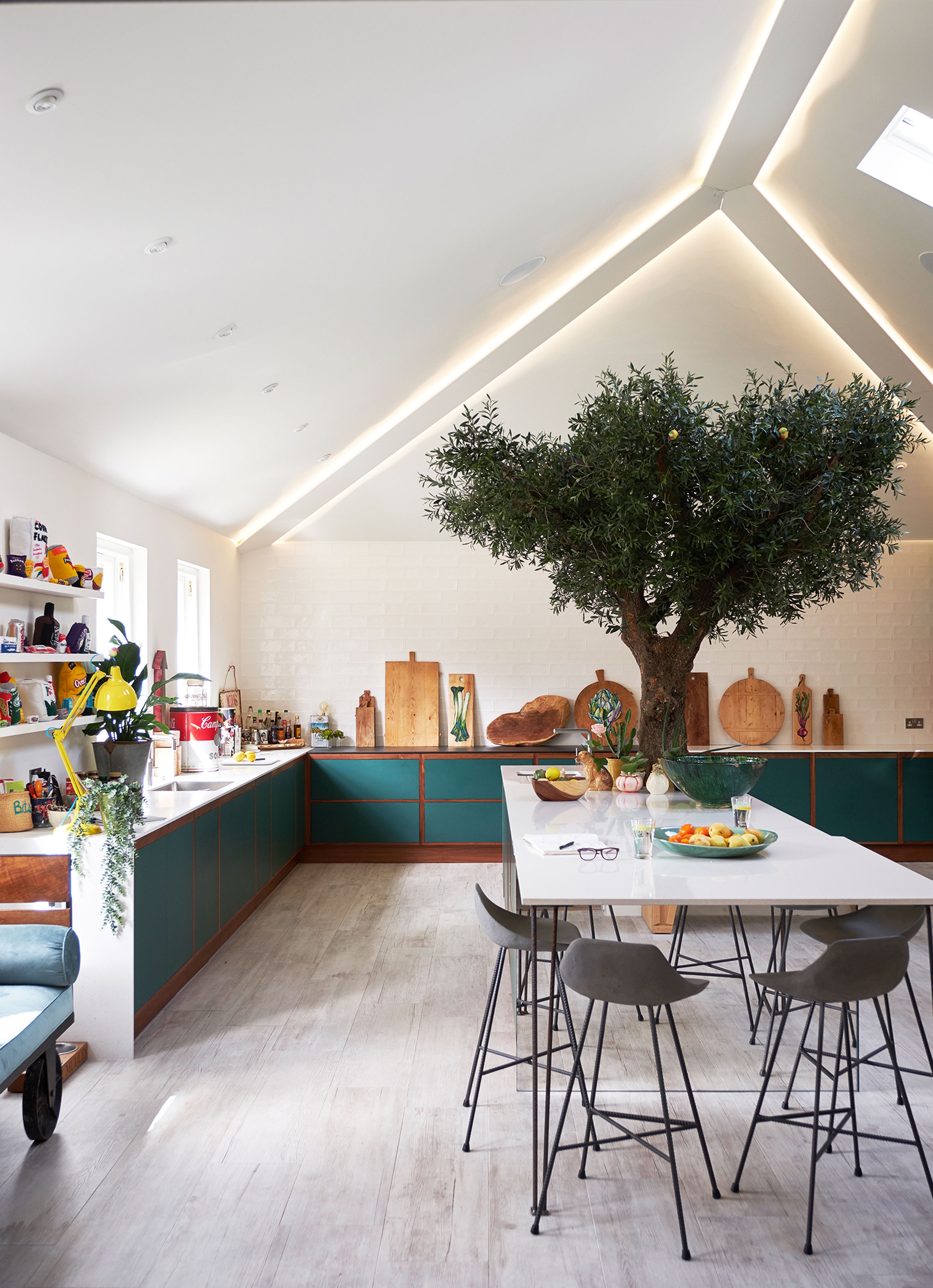
Just as outdoor gardens are prone to pesky little pests, so are indoor plants. And especially if you have a dramatic plant acting as the focal point of a space, it's a good idea to make sure that the pests are at bay.
Tony tells us that it's best to keep an eye out for common indoor pests like spider mites and aphids. 'If detected, treat them promptly with insecticidal soap or neem oil,' he says. We find this ready-to-use neem oil spray from Walmart to be a great option for pest treatment.
8. Remember to Repot

Repotting is crucial to ensuring that your olive tree gets to live a long and happy life. Carrie encourages repotting your olive tree every 2-3 years or whenever you feel like it has outgrown its current pot.
'Choose a slightly larger pot and refresh the soil to provide new nutrients,' she says. 'And when repotting, you can prune the roots slightly to encourage healthy new growth.'
Repotting indoors can get especially messy but we find that this genius repotting plant trick makes it all the more easy and far less messy.
Designing a space with olive trees is one of my favorite indoor gardening trends to come out of 2024. And while I love the viral Costco olive tree, nothing beats the real thing.
And now that you have all the expert insider information you need to care for your indoor olive trees, you can place them front and center for your guests to admire in all their glory. Whether you're hosting a Mediterranean-themed dinner party or simply giving your space a seasonal spruce, these stunning trees are nothing short of chic.
FAQs

What olive trees are best for indoors?
Most olive trees are fairly low-maintenance and thrive just as well indoors, as long as they're kept in sunny spots and planted in well-draining soil.
However, varieties like arbequina, picholine and manzanilla are known to flourish indoors.
Why is your indoor olive tree dropping its leaves?
According to Shane, If you underwater your olive tree, it may react by dropping all its leaves at once. 'This can be quite distressing to see, but you can check your plant is still healthy and alive by scratching off a small piece of the bark,' he says.
'If your olive tree is green underneath, simply go back to regular watering and it should grow new leaves in time.'







